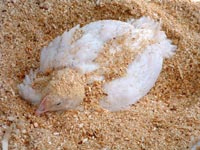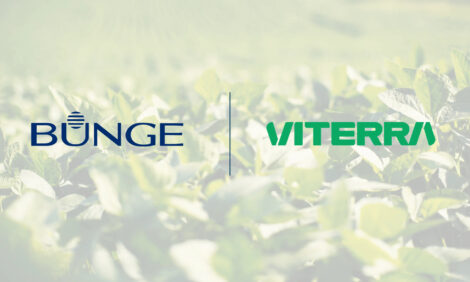



Litter Consumption Affects Gut Development
AUSTRALIA - Research at Poultry CRC has demonstrated that broilers consume a considerable amount of litter, which stimulates gut development, and that the amount consumed depends on the type of material.
In the latest edition of e-Chook news, Poultry CRC CEO, Dr Mingan Choct draws our attention to his orgnaisation's findings on the effects of litter consumption and litter type on gut development and health in layers and broilers. This is financially important for two reasons. Firstly, some poultry producers are facing difficulties in sourcing certain types of litter material between batches because of availability and price. Secondly, as explained below, a poorly-developed gut may mean reduced feed efficiency.
Poultry CRC has completed two research projects and one student project on this topic. The first project report is entitled 'Use of different dust bathing materials for layers – Effect on nutrient digestion and gut physiology', conducted at the Norwegian University of Life Sciences by Professor Birger Svihus and Dr Harald Hetland. The second project report is called 'Role of voluntary litter consumption by broiler chickens on gut function and gut health'. The project leaders were Professor Birger Svihus of the Norwegian University of Life Sciences and Dr Shubiao Wu of the University of New England, Australia. The third report is Ms Moreen Ali's thesis entitled 'The effect of litter material on productivity and health of broiler chickens'. Ms Ali, while employed as Laboratory Manager at Inghams Enterprises, completed her master's degree at the University of New England.

This research has demonstrated that the chickens consume a considerable amount of litter (bedding material), which stimulates gut development. Results show that consumption of litter containing coarse fibre markedly increases gizzard weight, together with a number of positive outcomes for enzyme secretion, disease resistance and bird performance.
The gizzard is regarded as a 'pace-maker' organ for nutrient digestion in poultry. A well-functioning gizzard grinds down feed to as fine as 5µm with an average diameter of 32.5µm. The proper function of the gizzard can only be maintained if the bird is given access to some structural components either in the diet (coarse fibre) or in the litter. If not, the gizzard fails to develop to its proper size and the proventriculus becomes enlarged. The nutritional implication is that a non-functioning gizzard will allow a large amount of unprocessed food to pass into the small intestine in a short span of time (as the modern bird has a voracious appetite). This large amount of food overwhelms the enzymatic digestive system, leading to undigested nutrients, such as starch and protein, ending up in the large intestine, where it ferments. Loss of digestion efficiency via fermentation of starch and protein in the large intestine often reduces feed efficiency in poultry.
It is clear from our research that birds consume different amounts of litter materials depending on the source. Hardwood saw dust is usually preferred over softwood litter or shredded paper in terms of stimulation of the gizzard.
These reports are available to Poultry CRC participants and the broader Australian poultry industry on request, added Dr Choct. Other requests will be considered on a case-by-case basis.











